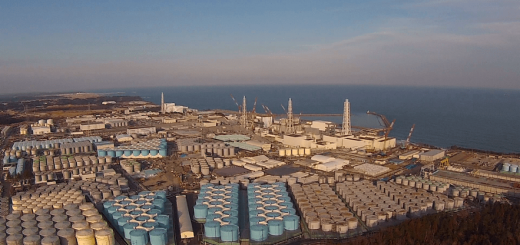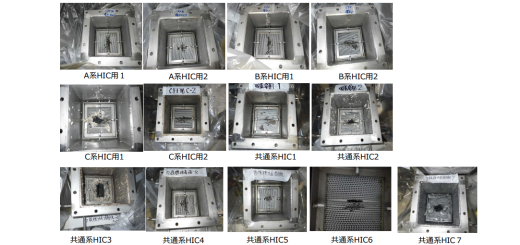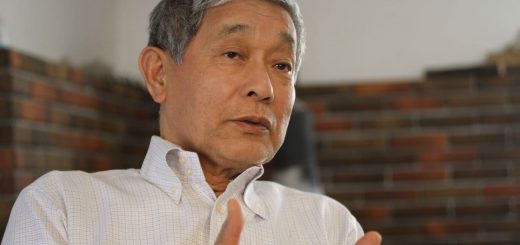News Watch
Japan to Cooperate with America’s Fast Reactor Plans
TerraPower, a US nuclear power development venture founded by Bill Gates, is planning to construct a “Natrium™” sodium-cooled fast reactor in the state of Wyoming. The Japan Atomic Energy Agency (JAEA) and Mitsubishi Heavy Industries, Ltd. are about to sign a memorandum for cooperation with this plan. The Ministry of Economy, Trade and Industry (METI) explains that this has been requested by TerraPower to Japan.
Natrium™ is a reactor that was developed by TerraPower in collaboration with GE Hitachi Nuclear Energy (GEH), who had together previously developed the small modular fast reactor, PRISM. It has an output of 345,000 kW, but by combining it with a molten-salt-based energy storage system (also developed in collaboration with GEH) using molten salt as a secondary coolant, the power can be raised to as much as 500,000 kW for 5.5 hours or more as needed. It uses maximally 20% enriched high-assay, low-enriched uranium (HALEU) metallic fuel provided by Centrus Energy.
The US Department of Energy (DOE) will provide half of the needed 4 billion dollars for construction costs. The DOE selected the Advanced Reactor Development Program (ARDP) for funding in October 2020. It decided to allocate the first subsidy of 80 million dollars to TerraPower from its 2020 fiscal year budget, and signed a cooperative agreement with TerraPower in May 2021.
The details of the technical collaboration with JAEA and Mitsubishi Heavy Industries are still being worked out, but they are expected to provide research data from the Monju fast breeder reactor and the idled Joyo fast breeder reactor test facility and to utilize JAEA’s AtheNa experimental sodium test facility. The plans for restarting the Joyo reactor, however, have been delayed, with the restart pushed back on December 2, 2021 from fiscal 2022 to the end of fiscal 2024.
Reporting on the collaboration, the January 9, 2022 daily Yomiuri noted, “According to persons involved, potential candidates for collaboration include (1) equipment for installing new fuel in the nuclear reactor and retrieving spent fuel, (2) a system for locating broken fuel rods during operation, (3) pump and heat-exchanger technology for circulating the molten sodium coolant used for transferring heat from the reactor core and (4) technology regarding structural elements inside the reactor, such as radiation-blocking or shielding walls and plates. … What the American side is particularly interested in is technology enabling fuel to be extracted safely and exchanged according to plan, which is essential for stable operation of fast reactors and for better work efficiency during maintenance and inspections. If broken fuel rods can be identified, accidents can be prevented and operations resumed quickly.”
Sodium from Monju to be Shipped to the UK
The Japan Atomic Energy Agency (JAEA), which is decommissioning the Monju fast breeder reactor, located in Tsuruga City, Fukui Prefecture, signed a memorandum of understanding with two companies, Cavendish Nuclear and Jacobs Engineering, on December 21, and will be shipping sodium to the UK as a “valuable item.” In the UK, it will undergo hydroxylation and is said to be being considered for use as an industrial neutralizing agent and other applications.
JAEA plans to begin shipments in fiscal year 2028, and will create a detailed work schedule by March that will include particulars such when the shipments are to be completed. However, 50 of the approximately 950 tons of radioactive sodium from primary systems and 27 of the approximately 780 tons of non-radioactive sodium from secondary systems remain at the bottom of storage tanks and cannot be retrieved with existing equipment, so it will be necessary to develop new devices.
It is too soon to say if the project will proceed as planned.
Not Everyone On-Board with Decision for Oceanic Release of Tritium
Tokyo Electric Power Co. (TEPCO) submitted a request on December 20 for prior consent to plans for constructing a sea-floor tunnel and other facilities for oceanic release of water containing tritium and other contaminants in the towns of Okuma and Futaba, Fukushima Prefecture, where the Fukushima Daiichi Nuclear Power Station is located. The next day, the 21st, TEPCO applied to Japan’s Nuclear Regulation Authority (NRA) for screening of its plans, and the NRA began full-scale screening on the 24th. On the 28th, the “Inter-Ministerial Council concerning the Continuous Implementation of the Basic Policy on Handling of ALPS Treated Water” decided on an action plan for dispelling “rumors.” The chairman of the Federation of Fisheries Cooperatives voiced his protest, and the chairs of Prefectural Federation of Fisheries Cooperatives expressed their renewed distrust of the plans.



